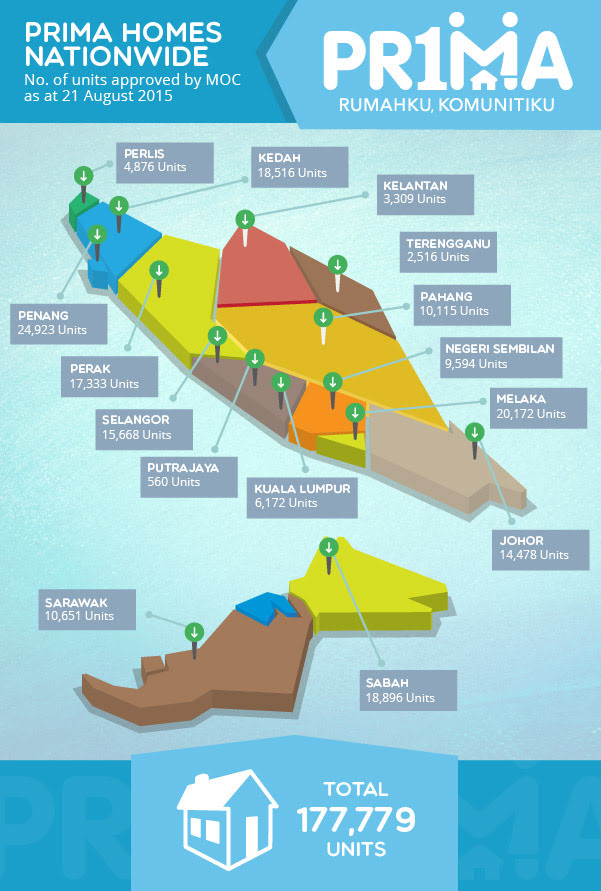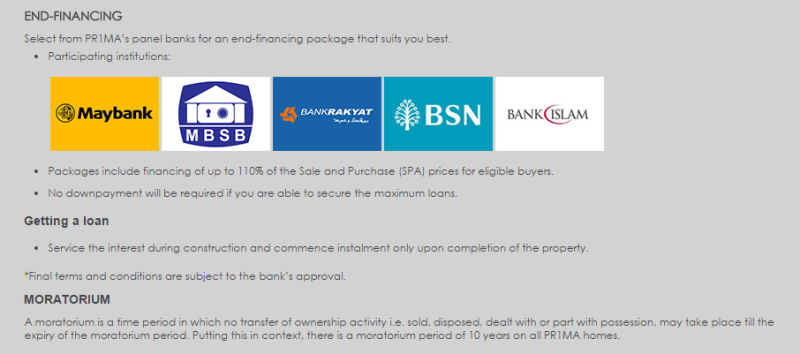Weeks before Budget 2017 was tabled, Prime Minister Datuk Seri Najib Razak launched an online survey where Malaysians were asked to list their top three concerns about the economy. In pole position were the rising cost of living and soaring housing prices.
Malaysia already has a household debt of 89.1% or RM1.03 trillion, one of the highest in the region, which has led Bank Negara Malaysia to maintain its tight lending measures.
But the central bank has denied the reason Malaysians are struggling to land their first property is due to its lending measures, alluding to the lack of affordable housing instead. The Finance Ministry also seconded this and urged the government to provide cheaper housing as demand exceeded supply.
During his 2017 budget speech, Najib said house ownership was very close to his heart and the government was committed in ensuring that every family could own a house.
One of the incentives unveiled for homebuyers under PR1MA is the “stepped up” end-financing scheme which aims to help selected PR1MA buyers, particularly those struggling to draw out a loan, to land their first home.

But before diving into the scheme, let’s recap what PR1MA is all about:

The nuts and bolts of PR1MA
Established in 2013, Najib launched PR1MA as an affordable housing scheme to assist middle-income households to purchase their first home. It has a mandate of building 500,000 homes with the aim of alleviating the rising cost of living faced by middle-income earners, or the M40 group.
Who qualifies for PR1MA
A Malaysian citizen
Individual or combine household income (husband and wife) between RM2,500 and RM10,000
Does not own more than 1 property
Single or married age 21 and above
Houses under the scheme are priced between RM100,000 to RM400,000 and located in various urban centres nationwide. To be an owner of a PR1MA home, a buyer will need to register and submit his or her name for balloting.
After being selected, participants will need to verify relevant documents to ensure eligibility, choose their preferred unit based on availability and financing. Prior to Budget 2017, the only scheme available under the PR1MA HOPE Home Assistance Programme is end-financing:
The difference between this and a conventional home loan is simply that buyers can obtain a 110% loan under the PR1MA as opposed to the conventional 10% down payment and additional miscellaneous fees.
| Individual or combine household income (husband and wife) between RM2,500 and RM10,000 | |
| Single or married age 21 and above | |
So why a “stepped up” end-financing scheme?
According to Najib, the scheme allows buyers to obtain financing easier with a total loan of 90% to 100%.
It helps homebuyers ease their monthly instalments for the first few years and rejection rates are drastically reduced, meaning opportunities to get a higher loan.
PR1MA end-financing scheme
Exclusive for PR1MA homebuyers and offers a packaged loan consisting of:
• Stepped-up financing for the first 5 years of the loan
• EPF Account 2 withdrawal for the purpose of PR1MA home instalment up to retirement or end of tenure
What does "stepped-up" financing mean? • First 5 years: Interest only
• Subsequent years: Interest and principal* Which banks offer this scheme? PR1MA's panel banks: Maybank, CIMB, RHB and AmBank
Those blacklisted through CCRIS are not eligible for the scheme
*Homebuyers can choose to start early repayment of both principal and interest within the first 5 years, depending on their affordability.
*Buyers can also choose to either or both when it comes to stepped-up financing or through EPF.
Source:PR1MA
• Stepped-up financing for the first 5 years of the loan • EPF Account 2 withdrawal for the purpose of PR1MA home instalment up to retirement or end of tenure | |||
| What does "stepped-up" financing mean? | • First 5 years: Interest only • Subsequent years: Interest and principal* | ||
| Which banks offer this scheme? | PR1MA's panel banks: Maybank, CIMB, RHB and AmBank | ||
How it works
Let’s say Ahmad, 32, has finally decided to purchase his first property. He has been working for ten years and currently earns RM3,000 a month. He does not have any outstanding loans and has been chose for a PR1MA property worth RM250,000.
He has decided to finance the purchase through a combination of the stepped-up end-financing scheme and by withdrawing monthly from EPF Account 2, which entitles him to get an estimated loan amount of up to RM282,200.
Loan amount: RM250,000 Interest: 4.58% Loan period in years: 30
Stepped up*
First 5 years (Interest only) RM54,887 Subsequent years (interest and principal) RM1,278 x 300 months = RM383,400 Total interest paid: RM188,287
*This is just a rough estimate based on information available on the PR1MA website and the table found on The Star article.
Disclaimer: The previous version of this article weaved deductions from the EPF Account 2 into its calculations. This has been revised to reflect the latest information on the end-financing scheme where the Account 2 is used as collateral for the loan.
| Loan amount: | RM250,000 |
|---|---|
| Interest: | 4.58% |
| Loan period in years: | 30 |
| First 5 years (Interest only) | RM54,887 |
| Subsequent years (interest and principal) | RM1,278 x 300 months = RM383,400 |
| Total interest paid: | RM188,287 |



No comments:
Post a Comment